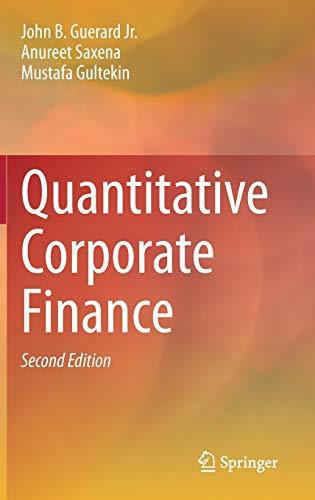Question
The management of a private transportation company is interested in reducing the carbon footprint of their company by replacing several old trucks. These include four
The management of a private transportation company is interested in reducing the carbon footprint of their company by replacing several old trucks. These include four (4) Class 8 Volvos, thirteen (13) on-highway Volvo trucks, and twenty-seven (27) Freightliners. The company may either replace the ageing trucks with new ones of the same kind OR replace them with electric Semi trucks from Tesla. The first alternative involves scrapping all old trucks and purchasing forty-four (44) new Volvo and Freightliners models and planting 150,000 trees (to offset carbon usage). The second option involves scrapping all old trucks and purchasing thirty-one (31) Tesla models along with related equipment. The table below shows the revenue and expense predictions: Description Alternative 1 Alternative 2 Machinery/related equipment $2,580,000 $1,750,000 Annual revenues due to the new trucks $2,400,000 $2,260,000 Annual labour cost $234,000 $385,000 Annual O&M cost $790,000 $650,000 CCA Rate 24.4% 24.4% Project life 15 years 15 years Salvage value
$350,000 $460,000 The management team believes that various investment opportunities available for the company will guarantee at least a rate of return on investment (MARR) of at least 9.5%. The marginal tax rate is 21%. Due to uncertainty, some input variables may vary from the base cases presented in the above table. The following variabilities in estimates should be considered: Variable Minimum Maximum Revenues -15% +20% Labour Cost -35% +10% O&M Cost -5% +30% Assume that each of these variables can independently deviate from its base value. a] Assuming that the uncertain variables change once at a time, use NPW to conduct sensitivity analysis. Ideally, you should plot the relationship between percentage change in a variable and NPW. You can use an increment of 5% change in input variables when conducting sensitivity analysis. You can consider a range of variation corresponding with the minimum and maximum percentage changes given in the previous table. b] Now, consider that each variable can take only three possible outcomes within the range of possible outcomes: lowest value, base value, and highest value. Each outcome can happen with a probability: 0.10, 0.65, and 0.30, respectively. Considering the distributions of the three uncertain variables, predict the probability distribution of NPW for each alternative. You may want to note that each NPW will have 27 possible combinations of outcomes (3x3x3), and you are required to do that for each alternative. c] If Alternative 1 is chosen over Alternative 2, identify all possible scenarios in which Alternative 1 is better than Alternative 2. What is probability that this decision correct?
Step by Step Solution
There are 3 Steps involved in it
Step: 1

Get Instant Access to Expert-Tailored Solutions
See step-by-step solutions with expert insights and AI powered tools for academic success
Step: 2

Step: 3

Ace Your Homework with AI
Get the answers you need in no time with our AI-driven, step-by-step assistance
Get Started


